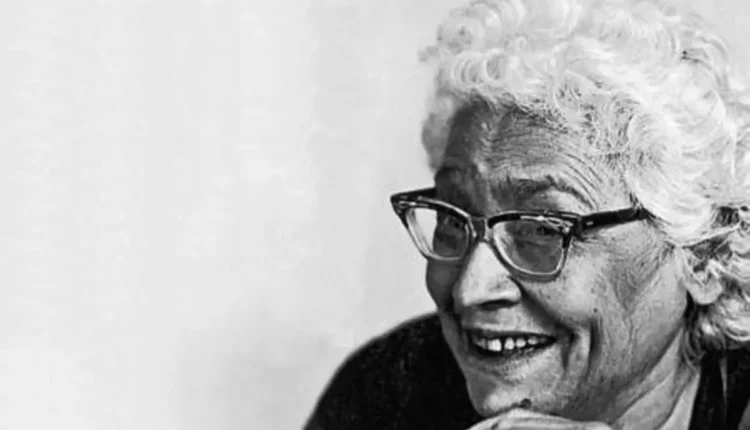Ismat Chughtai, a luminary in the realm of Urdu literature and cinema, graced the literary stage with her profound insights, unwavering courage, and an unapologetic voice. Born on 21 August 1915 in Badayun, Uttar Pradesh, Chughtai’s journey unfolded against the backdrop of a changing India, echoing her relentless exploration of themes that society deemed taboo.
Early Life and Formative Years of Ismat Chughtai
Chughtai’s early life was a tapestry of diverse experiences, shaped by her nomadic existence due to her father’s civil service career. The influence of her brothers, particularly Mirza Azim Beg Chughtai, ignited the spark of literary curiosity within her.
Despite familial resistance, she pursued education at Aligarh Muslim University, eventually joining the Progressive Writers’ Association in 1936. This marked the inception of her literary odyssey.
Literary Prowess Takes Flight
Ismat Chughtai’s writing journey commenced with a drama titled Fasādī in 1939, published under the pseudonym Azeem Beg, sparking intrigue among readers. As a trailblazer in the Progressive Writers’ Movement, she delved into realism, mirroring the influence of global literary giants like Chekhov and Shaw.
Her first novella, Ziddi (1941), a poignant narrative of love and societal constraints, earned her acclaim and set the stage for her literary dominance.
Triumphs and Turmoil: The Lihaaf Controversy
The zenith of Ismat Chughtai’s literary career came with Lihaaf (The Quilt) in 1942. Inspired by a rumored affair, the story dared to explore female sexuality and faced a trial for obscenity. The ensuing controversy cast a long shadow, but Chughtai, resilient, eventually found solace when the woman who inspired the tale expressed gratitude for its impact on her life.
Literary Exploration Meets Cinematic Brilliance
Ismat Chughtai’s literary prowess seamlessly transitioned into the world of cinema. Her foray into scriptwriting with Ziddi (1948) marked the beginning of a prolific cinematic career. Notable works like Arzoo (1950) and Fareb (1953), where she stepped into directing alongside Shaheed Latif, highlighted her multifaceted talent.
Novels: A Literary Evolution
The 1960s witnessed Ismat Chughtai’s evolution into a novelist. Masooma (1962) delved into the plight of a young actress, unraveling the harsh realities of societal exploitation. Despite lukewarm receptions for some works, Dil ki Duniya (The Heart Breaks Free) garnered accolades for its autobiographical portrayal of women in a conservative Muslim household.
Legacy and Critical Reappraisal
As Ismat Chughtai battled Alzheimer’s in the late 1980s, her legacy endured. Posthumously, a resurgence of interest in Urdu literature propelled Chughtai to new heights. Tedhi Lakeer emerged as a magnum opus, drawing comparisons to world literature standards. Critical reappraisals celebrated her diverse themes beyond Lihaaf, recognizing her enduring impact on Urdu literature.
Influences and Writing Style
Chughtai’s liberal perspective, manifested through her family’s religious diversity, shaped her inclusive worldview. Her writings, a fusion of Qur’anic, Gita, and Biblical influences, transcended religious boundaries, reflecting an open-minded ethos that defines her literary legacy.
Also Read: Sugith Varughese: Redefining Success in Canadian TV

